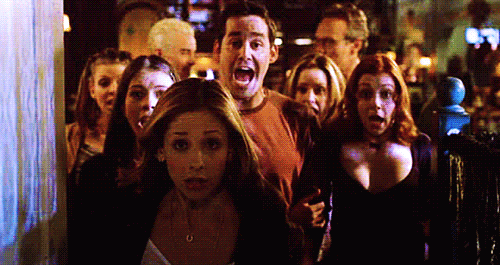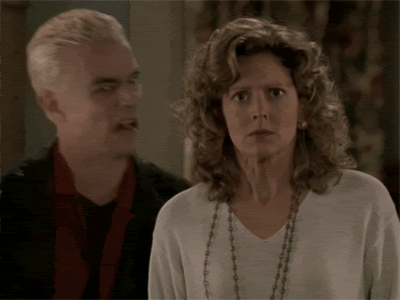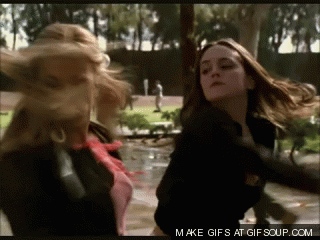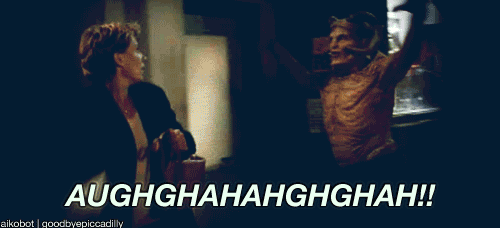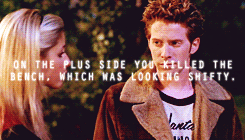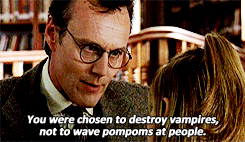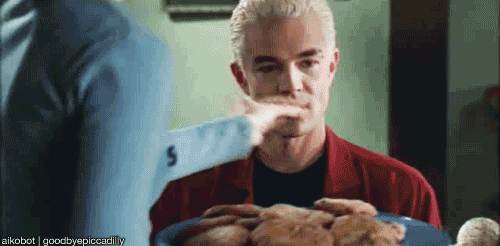I read the first book in Cassandra Clare’s Mortal Instruments series over a year ago, and while I liked it, it didn’t leave me chomping at the bit to read the rest of the series immediately. Really, I remember thinking after finishing the book, the format I wanted to experience this story in was cinema. Everything was so big and bold and visual. It’s funny, because I’ve read other books that I adored as books, and while I loved the film versions as well, the books held the magic for me. *coughHarryPottercough*. But for whatever reason, City of Bones just felt like a movie to me, even while reading.
So obviously, I was happy to hear it was being made into a movie. This is how I wanted to experience this story in the first place! I wasn’t a rabid fan like many out there, but the trailers looked good and I’m a big fan of on-screen magical demon slayage, however I can get it. Then I managed to snag a couple passes to an advance screening, which really made the decision to see it a no-brainer.
Overall, I was really pleased with the adaptation. I think it’s good that I only read the book once, and I read it a while ago, because while I was familiar with the story, I wasn’t so familiar that every deviation from the source material stood out like someone pointed a spotlight on them *coughHarryPottercough*. I could experience the story with eyes that may have not been fresh, but were at least wide open. I thought the casting was (mostly) spot-on, the acting was good, the writing was solid, and the effects and visuals were lovely.
The main characters of the book all made the transition from book to screen more or less intact. I still liked Simon more than Jace (I feel like, as in the book, Jace relies a lot on smolder, and Simon on wit, and for me, wit will always trump smolder). Also, Simon makes a Ghostbusters reference early on that pretty much cemented him as my Favorite Franchise Character Forever. But book-Jace fans will not be disappointed. There is plenty of smolder and snark, as well as heaps of demon-slaying goodness. I also enjoyed Alec and Isabelle, although if I had to pick one character who didn’t make the jump to screen as well as the others, I’d have to go with Alec. He was…fine? But I didn’t really feel anything toward him, whereas I liked Alec in the book.
The supporting players — Valentine, Jocelyn, Luke, Magnus — were all strong. I would be totally happy to see a movie solely about the adult cast. They all made excellent use of very little screen time, and I found myself wishing for more of all of them (although don’t get me wrong — I didn’t wish for less of the teen cast, either). Jonathan Rhys Meyers has made deliciously sinister into an art form, and it makes me want to go back and watch The Tudors again even though I had to quit that show (because seriously, guys, SO MANY NASTY EXECUTIONS). Lena Headey was strong and confident and I wish she was conscious more. Aidan Turner played a no-nonsense werewolf so well, I didn’t even remember that he’s a hobbit. And I know there are a truckload of Magnus Bane fans out there, but he’s not in the first book much, nor is he in the first movie much, so I don’t really get it yet. But I can say, Godfrey Gao totally rocked the guyliner.
As far as story goes, I think the writers walked the tightrope of cut-vs-keep masterfully. A very twisty-turny plot was, for the most part, streamlined into something a new audience could grasp without dumbing it down and alienating the original fans. Yes, there were some scenes in the book (even some action scenes, surprisingly) that didn’t make the cut. Yes, there were some lines added to the film version that didn’t really enhance the experience at all (one, in particular, I felt robbed the audience of an especially gasp-inducing moment). But for the most part, I thought all the variations from the book made sense, adapting the story into one that will please fans of the book as well as people who have never picked up the series before.
There’s lots of action, lots of intensity, and a crazy-creepy world where nothing is ever as it seems. As YA book-to-movie adaptations go, it’s definitely one of the better ones I’ve seen. I didn’t Hunger Games love it, but I absolutely enjoyed it. I think fans of the books will be pleased, and those new to the story will be drawn in. It even made me want to go read the second book in the series, which I was previously unmotivated to do. And for a film based on a book — especially the first film in a series — I think that’s one of the best reactions it could hope to inspire.


